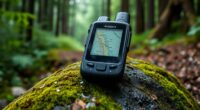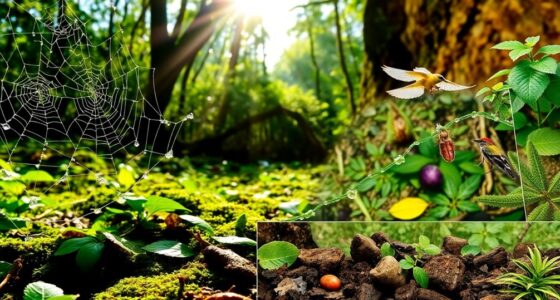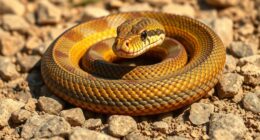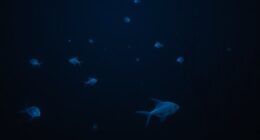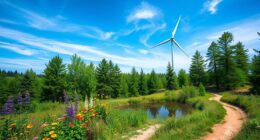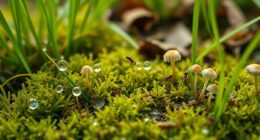Have you ever wondered how scientists determine when a species is truly in danger? The Red List provides a systematic way to identify at-risk animals and plants, but it involves more than just counting numbers. It uses specific criteria and careful analysis to assess threats and trends. Understanding how this process works can reveal why some species get urgent attention while others don’t — and what that means for conservation efforts.
Understanding the Purpose of the Red List
Have you ever wondered why the Red List exists? Its main purpose is to identify species at risk of extinction and highlight the urgency of their conservation. It serves as a global warning system, providing scientists, policymakers, and the public with crucial information about biodiversity health. Recognizing the importance of mental wellbeing in conservation efforts can enhance community engagement and long-term success. By assessing which species are endangered or vulnerable, the Red List helps prioritize conservation efforts and allocate resources effectively. It also raises awareness about the threats facing different species, motivating actions to protect their habitats.
Without this tool, it would be harder to understand the scale of biodiversity loss or to track progress in conservation. Ultimately, the Red List is essential for guiding efforts to preserve the planet’s biological diversity for future generations.
Key Criteria Used to Assess Species
To determine which species are at risk, scientists rely on specific key criteria that assess their conservation status. These criteria include factors like the size and stability of a species’ population, how quickly it’s declining, and the geographic range it occupies. They also evaluate the degree of habitat fragmentation and the severity of threats, such as hunting or habitat destruction. The criteria help categorize species into different risk levels, from Least Concern to Critically Endangered. Self watering plant pots utilize reservoir systems to maintain consistent moisture, illustrating how understanding environmental needs is crucial for species survival.
Population Size and Trends
Why does population size matter so much in assessing a species’ risk of extinction? Because smaller populations are more vulnerable to threats like disease, genetic problems, and environmental changes. When numbers decline, it becomes harder for the species to recover, and their chance of disappearing increases.
Trends also matter—if a population is rapidly shrinking, it signals urgent danger. Stable or growing populations suggest better chances for survival. Scientists track these patterns over time to determine if a species is heading toward extinction.
Even a species with a large current population can be at risk if its numbers are declining fast. Therefore, understanding both how many individuals are left and whether that number is decreasing helps researchers evaluate extinction risk more accurately.
Habitat Quality and Availability
Habitat quality and availability are crucial factors in determining a species’ risk of extinction because they directly influence the survival and reproductive success of individuals. When habitats are rich in resources like food, water, and shelter, animals thrive and reproduce effectively.
Additionally, maintaining optimal habitat conditions can support the resilience of species against environmental stresses, including climate change. Noise levels of modern heat pumps When habitats are degraded or fragmented, they can limit these resources, leading to decreased survival rates. If a species loses large portions of its habitat or the quality diminishes, it struggles to find what it needs to persist.
You’ll find that even small changes in habitat can have large impacts on populations. Protecting and restoring habitats ensures that species have the space and resources necessary to survive and recover, making habitat stability a key component in conservation efforts.
Threats From Human Activities
Human activities have become a dominant force shaping the fate of many species, often intensifying threats that already endanger their survival. You may unknowingly contribute to habitat destruction through deforestation, urban expansion, or agriculture, leaving animals with nowhere to live.
Pollution from chemicals, plastics, and waste contaminates water, air, and soil, poisoning species and disrupting ecosystems. Overfishing and hunting reduce populations faster than they can recover, pushing species toward extinction.
Climate change, driven by greenhouse gas emissions, alters habitats and affects migration patterns, breeding cycles, and food availability. These human-induced threats compound natural challenges, making it harder for species to adapt and survive.
Advancements in automation technology are also impacting conservation efforts, providing tools for monitoring and protecting vulnerable species more effectively.
Recognizing your role and reducing harmful activities can help slow these declines and protect vulnerable species.
The Role of Field Research and Data Collection
Field research and data collection are essential tools for understanding species and their environments. When you go into the field, you gather firsthand information on a species’ population size, behaviors, and habitat conditions. You might track animals, observe their interactions, or collect samples like soil, water, or plant material. This data helps identify trends, such as declining numbers or habitat loss, which are critical for assessing conservation status. Accurate, detailed information enables scientists to detect early warning signs of trouble and prioritize species in need. Your efforts contribute to building comprehensive datasets that form the backbone of the Red List. Vetted Without this on-the-ground research, understanding the true state of species and their risks would be impossible.
Categorization of Risk Levels
Once the data collection is complete, experts analyze the information to determine how at risk each species is. They compare the data against established criteria, like population size, rate of decline, and geographic range. Incorporating cultural intelligence into conservation strategies can enhance collaboration with local communities and stakeholders, ensuring more effective efforts. Based on this, they assign species to specific risk categories. These categories include Least Concern, Near Threatened, Vulnerable, Endangered, Critically Endangered, and Extinct. Each level reflects how severe the threat is to the species’ survival. For example, a species labeled Endangered faces a very high risk of extinction in the wild. This categorization helps prioritize conservation efforts and guides policymakers. It also provides clarity on which species need immediate action versus those that are less threatened. Clear categories make it easier to communicate conservation priorities worldwide.
The Process of Updating and Maintaining the List
Updating and maintaining the Red List is an ongoing process that requires careful review of new and existing data. You gather information from scientists, conservationists, and field surveys worldwide to ensure accuracy. A critical aspect involves assessing how high refresh rates and other technological factors influence the reliability of data collection and reporting. This involves evaluating recent population trends, habitat changes, and threats faced by species. You also review scientific studies and monitor reports on environmental disturbances. Once data is collected, experts analyze it to determine if a species’ risk level has changed. You then update the list accordingly, making sure each classification reflects current conditions. Regular reassessments are scheduled to keep the list reliable and relevant. This meticulous process guarantees that conservation efforts focus on species truly in danger, helping allocate resources effectively and informing global strategies to protect biodiversity.
Impact of the Red List on Conservation Strategies
The Red List directly shapes conservation strategies by highlighting species at greatest risk, guiding priorities and resource allocation. When you see a species listed as critically endangered, it signals urgent action. Conservation efforts focus on protecting habitats, enforcing anti-poaching laws, and restoring populations for these species. The list helps policymakers decide where to direct funding and develop targeted plans. It also influences the creation of protected areas and specialized recovery programs. By identifying the most threatened species, the Red List ensures that limited resources are used efficiently. This focused approach increases the likelihood of success and prevents wasteful efforts on less at-risk species. Additionally, the list emphasizes the importance of personal and community resilience in conservation initiatives, encouraging local involvement and awareness. Ultimately, the Red List acts as a critical tool to align conservation actions with the species that need them most.
How Public and Policy Makers Use the Red List
Public and policy makers rely heavily on the Red List to guide their decisions and actions. They use it as a key tool to identify species at risk and prioritize conservation efforts. When drafting laws or allocating resources, they consult the Red List to determine which species need immediate protection.
The list helps shape policies aimed at habitat preservation, pollution control, and endangered species recovery plans. It also informs public awareness campaigns, encouraging communities to support conservation initiatives.
Moreover, governments often reference the Red List when negotiating international agreements, ensuring global cooperation. By providing clear, scientifically-backed assessments, the Red List empowers decision-makers to act decisively and effectively to prevent extinctions and protect biodiversity. The Red List also incorporates conservation strategies, guiding efforts to implement effective protective measures.
Conclusion
By understanding the Red List, you see how scientists identify species at risk and prioritize conservation efforts. This system uses clear criteria like population trends and threats to evaluate species’ statuses accurately. Regular updates ensure the list stays current, guiding policies and public action. Ultimately, the Red List helps you recognize the importance of protecting biodiversity, inspiring responsible choices to preserve vulnerable species before it’s too late.
